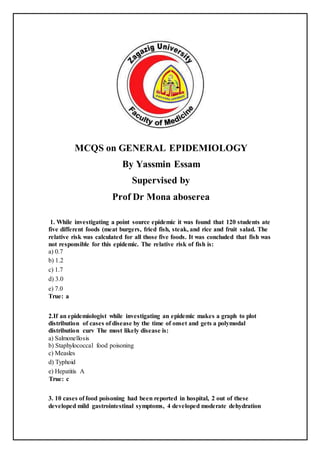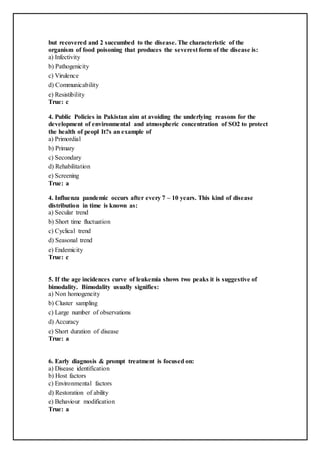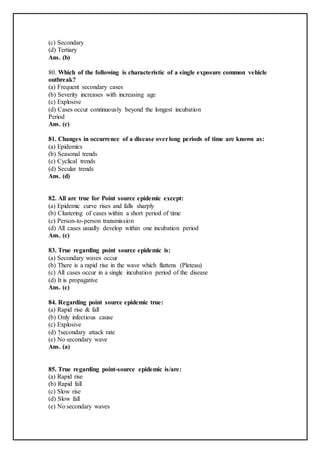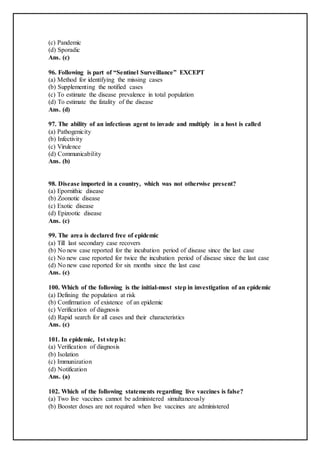This document contains 63 multiple choice questions about general epidemiology. The questions cover a range of epidemiological topics including levels of prevention (primordial, primary, secondary, tertiary), disease transmission and distribution, outbreak investigation, and risk factors. Correct answers are provided for each question.





















